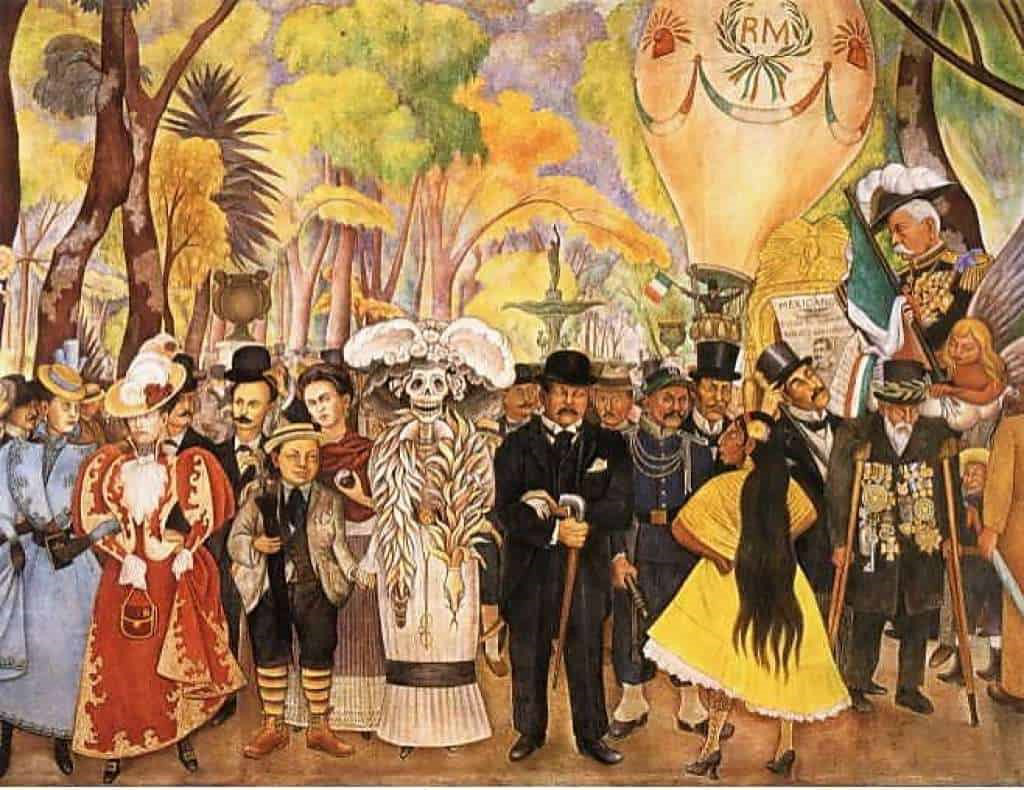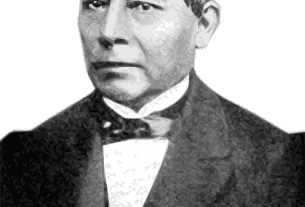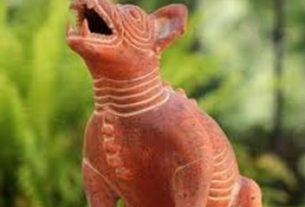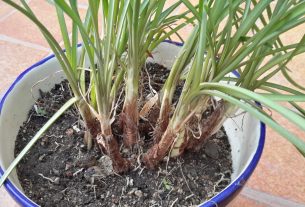By Path to Citizenship Series on the November 2019 Edition
In the late 1800s and early 1900s, Jose Guadalupe Posada began creating engraving and etchings to illustrate the newspapers of the day called broadsheets. His prints of skeletons doing everyday jobs are still called Calaveras today.
Posada was the first to sketch the skeletons wearing contemporary clothes and become part of the day to day scenes’ that portrayed the upper class Mexican. Of course, the Calaveras were usually the servant girl wearing cast-off clothes. Calavera etchings were generally of women because in Mexico death is portrayed as a woman (la Muerte).
Posadas’ most famous etching is of La Calavera Catrina who has become an icon in Mexico representing the Día de los Muertos. The name La Calavera Catrina is derived from Diego Rivera’s work Dream of a Sunday afternoon along Central Alameda.
The mural portrays over 400 years of Mexican history and it includes Posada, Frida Kahlo and himself. La Catrina has been given a body and a very expensive outfit; it is believed Rivera depicted la Calavera Catrina this way to indicate that death applies to all of us, including the rich.
The culture of La Calavera Catrina is also politically inclined as it has ties to The Porfirio Díaz regime, whose accomplishments include modernizing Mexico in spite of the existing governments’ repressions and corruption.
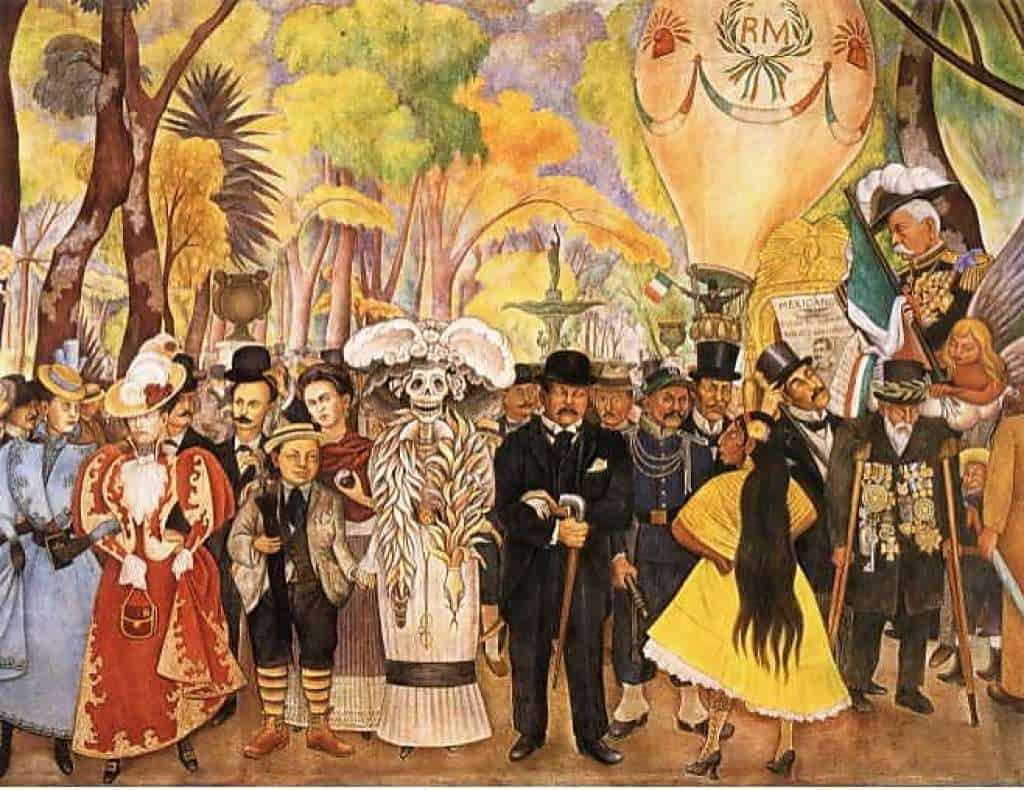
So the Catrina was used to symbolize the differences between the upper and lower classes. The thought is that we are all really just a bag of bones beneath our fancy clothes and that the rich have nothing on the rest of us. In societal terms, it was also a new way of looking at class and wealth within a society that was rapidly changing. These days, La Catrina has come to represent the Day of the Dead and the images of her and other skeletons are now an art form in Mexico.
Calavera in Mexico can mean one of three things. During Los Días de Los Muertos, you will see a huge variety of edible skulls. These were made originally from sugar and now can be found in anything sweet, from chocolate to decorated cookies.
You will also see Calavera candles decorating the graves of family members. Be aware that many of these sugar skull can-dies are decorated with non edible sequins, rhinestones and other items that should not be eaten.
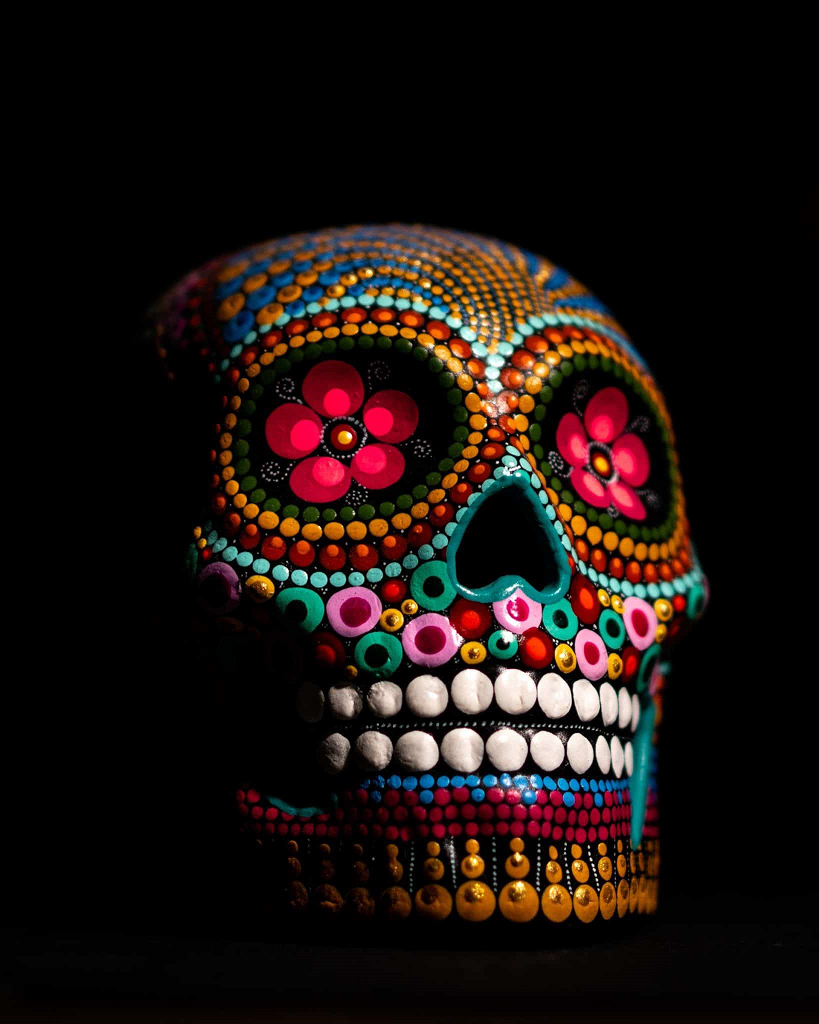
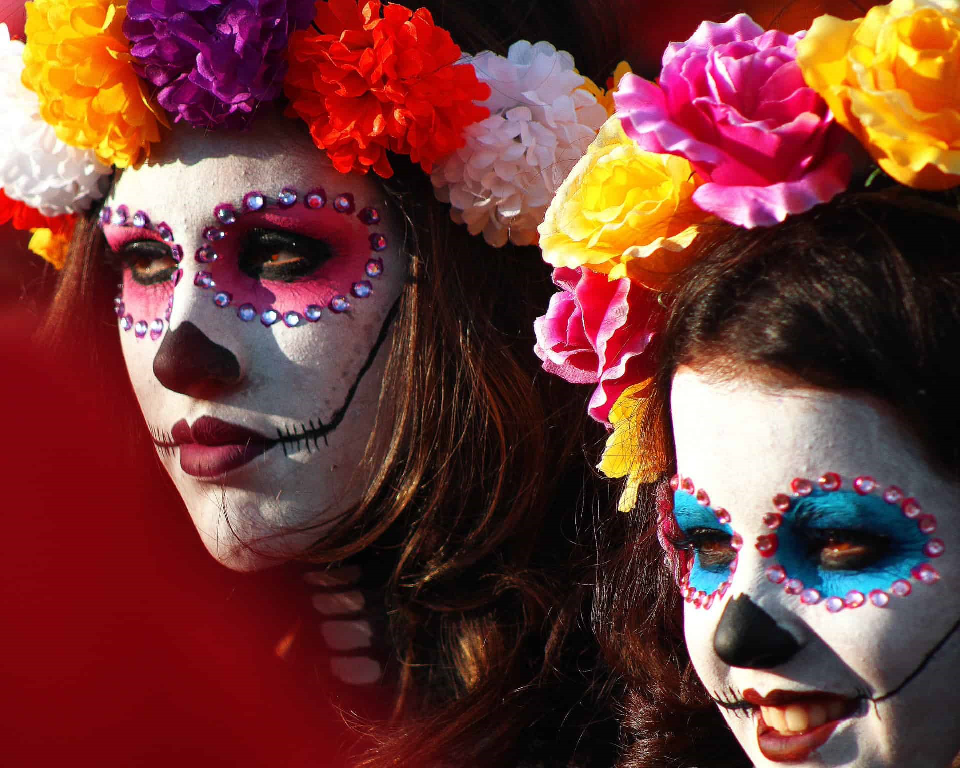
Calaveras are also funny poems that have, at their core, jokes about politicians, famous people or simply family members.
Finally, Calaveras can be spotted on everything from t-shirts to designer clothing, graffiti murals, tattoos, incredible Huichol art, sculptures and anything in between.
In Mexico, the Aztec culture believed life on earth to be something of an illusion death was a positive step forward into a higher level of conscience. For the Aztecs, skulls were a positive symbol, not only of death but also of rebirth.
People in Mexico wear traditional skull masks, and the tradition of painting faces to look like a skull has grown up as a variation to this. The wearing of masks has been a powerful symbol throughout traditional cultures, of the ability of humans to get in touch with their darker, chaotic side.
Marigold is believed to be the flower of the dead. A lot of decoration is done around the eyes with these flowers to symbolize life; cobwebs act as a contrasting element representing death. Many times, burning candles are placed inside the eye circle, symbolizing remembrance.
For the full story, see the source (images and article): xyuandbeyond.com
The full edition or view it online
Manzanillo Sun’s eMagazine written by local authors about living in Manzanillo and Mexico, since 2009
